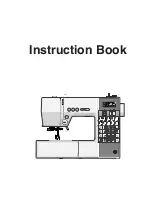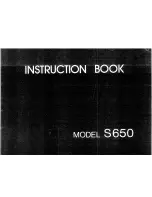
1. Introduction
13
1.4 Button descriptions of
the handset
L
Keep the front cover page open for button
locations.
A
{j
/OK
}
(Menu/OK)
L
To initiate programming.
L
To store a setting during programming.
L
To lock/unlock the handset buttons (page
30).
B
{k}
(Phonebook)
L
To access the phonebook (page 31).
C
{C}
(Talk)
L
To make/answer calls (page 29, 31).
D
Navigator
L
To adjust volume (page 24).
L
To search for a stored item (page 32).
L
To select features or feature settings
during programming.
L
To navigate to the next operation.
E
{s}
(Speakerphone)
L
For speakerphone operation (page 29).
F
{
R
}
(Recall)
L
To access special telephone services or
for transferring extension calls.
G
{R}
(Redial/Pause)
L
To redial one of the last 10 numbers
dialled from the handset (page 29).
L
To insert a pause during dialling.
H
{ih}
(Off/Power)
L
To turn power ON/OFF (page 23).
L
To hang up (page 29, 31).
L
To stop an operation or programming
session.
L
To exit programming.
I
{
C/
T
}
(Clear/Mute)
L
To erase a character/number (page 32).
Press and hold to erase all
characters/numbers.
L
To mute your voice to the other party
during a conversation. Press again to
resume the conversation.
J
{
INT
}
(Intercom)
L
To page or locate another handset (page
83).
K
Microphone
L
The built-in microphone.
Note:
L
Up to 3 menu items can be displayed at a
time. To select a menu item not shown on the
current page, scroll up or down by pressing
the navigator key,
{e}
or
{v}
, respectively.
FC235AL-PFQX2248ZA_en.book Page 13 Monday, June 20, 2005 2:19 PM
Summary of Contents for KX-FC231NZ
Page 113: ...111 Notes ...
















































